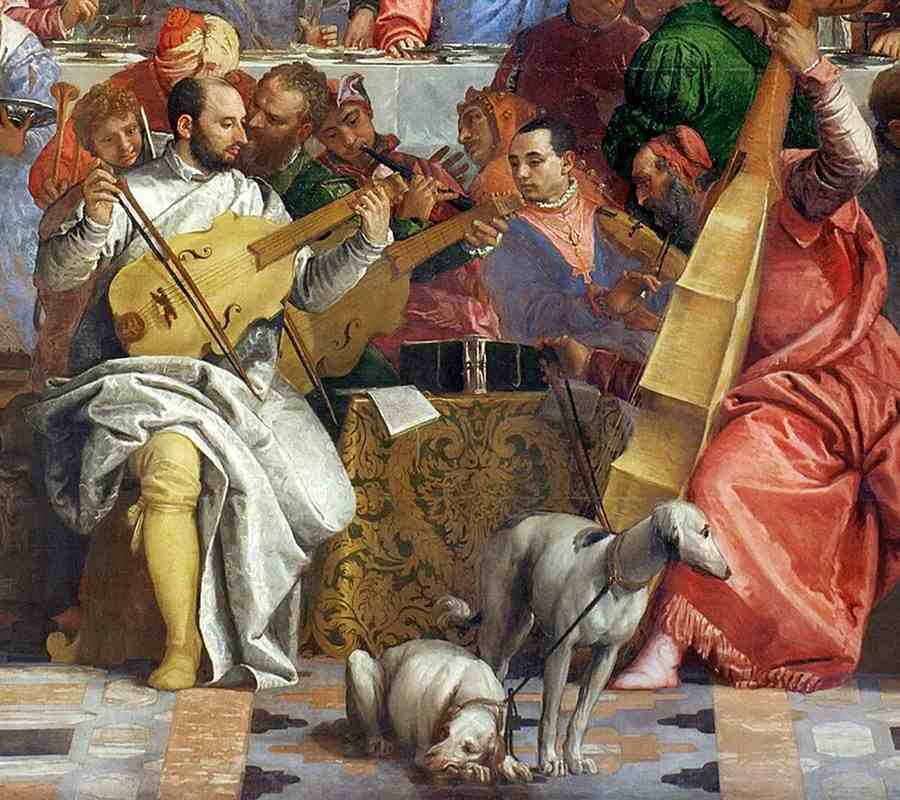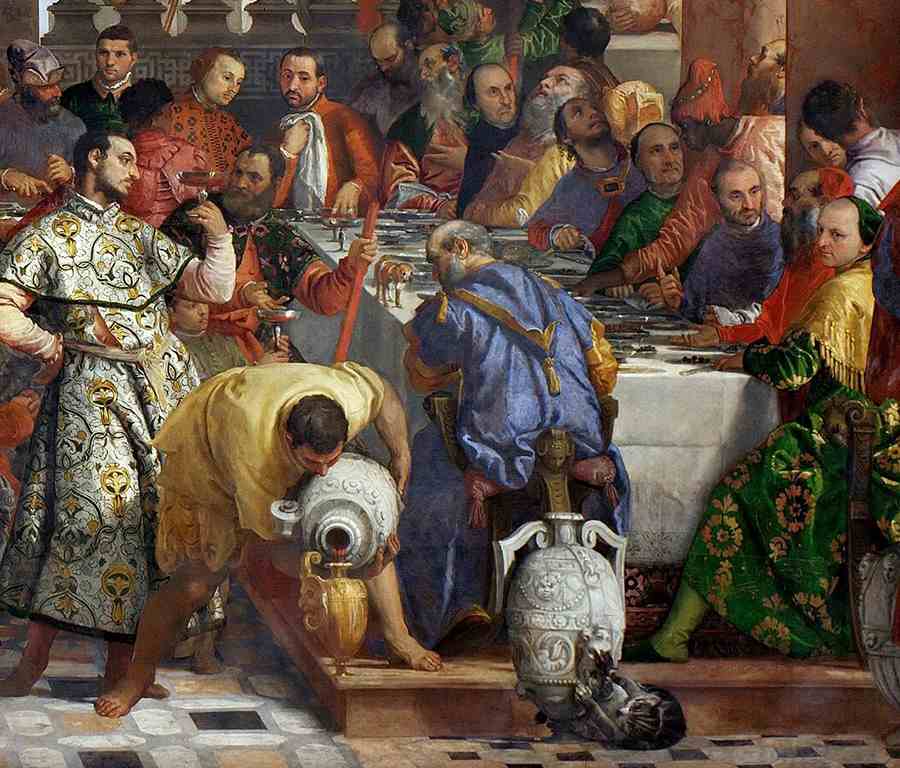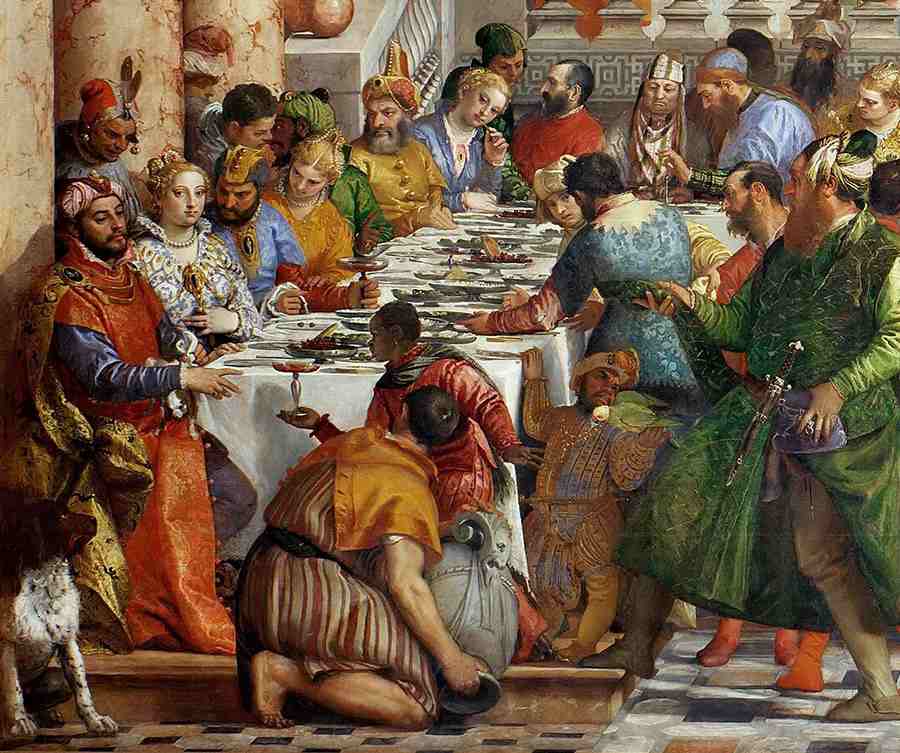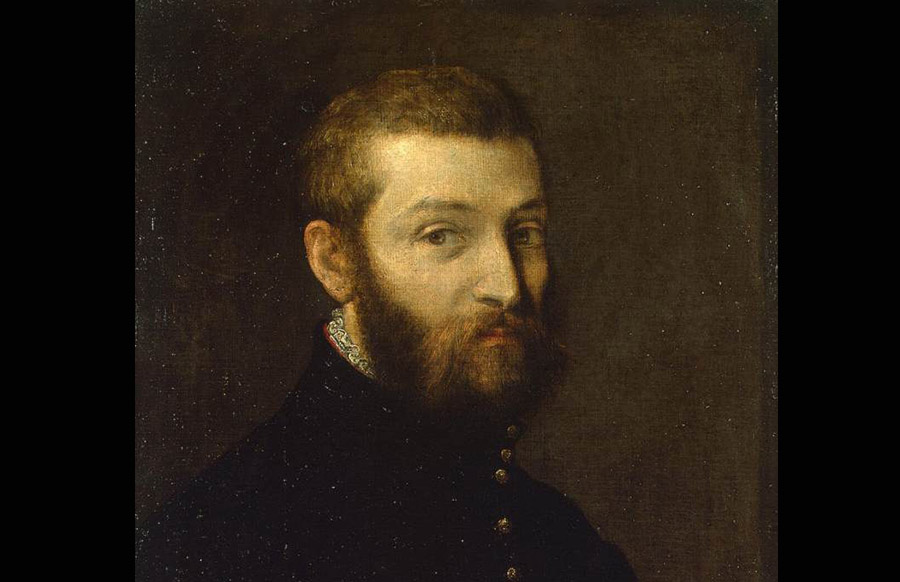Painter Veronese: "The Wedding at Cana"
Scott Cai
June 19, 2024
[First compiled by New Sancai] "The Wedding at Cana" is an oil painting created by the Italian painter Paolo Veronese (1528 - 1588). The content is taken from the story of the Bible. It tells the story of Jesus, the Virgin Mary, and the apostles. On the banks of the Jordan River, they met a family in Cana who was holding a wedding banquet. The host invited them to attend.
At the wedding banquet, everyone drank and celebrated, but later the wine was all gone. In the culture of the time, such a misjudgment would be extremely humiliating for the bride and groom. The shame of not having wine at their wedding will stay with this Ghanaian couple for the rest of their lives.
Christ asked someone to fill the wine jar with water, and then had the jar be brought to the owner. Because Jesus has quietly turned the water in the altar into wine (John 2:1-11), allowing everyone to continue drinking and rejoicing.
This large oil painting (6.77 m × 9.94 m) depicting the scene of Christ's first miracles occupies the back wall of the refectory of the San Giorgio Monastery in Venice. After several moves during the war, it finally became the most spacious oil painting (67.29 square meters) in the collection of the Louvre Museum in Paris.

△ Jesus, the Virgin Mary, and some of his apostles sit in distinguished positions in the center of the banquet table.

△ The painter Veronese (left in the picture), wearing a white robe, plays the viola (viola da); next to him is the painter Titian (right in the picture), wearing a red robe and playing the violone (violone).

△ Jesus performed his first public miracle, secretly turning the water in the altar into wine. The person standing in white on the left of the picture is the poet Pietro Aretino.

△ Sitting on the far left side of the dining table are the groom Sirim (first from left) and the bride Lydia (second from left). The others sitting side by side are all distinguished guests.

△ Veronese’s self-portrait.
(Compiled by: Bai Ding)
(Editor: Jiang Qiming)
(Source of the article: Compiled and published by New Sancai)
